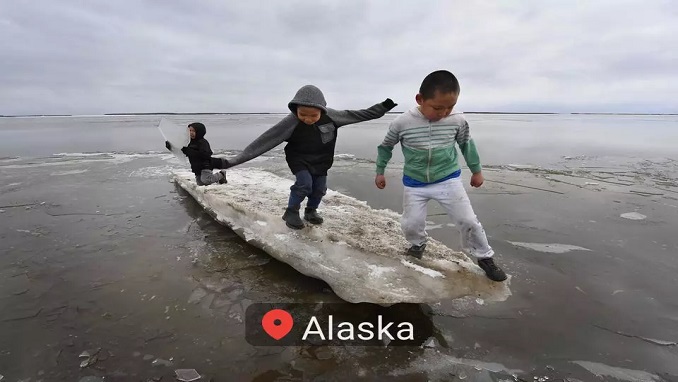
Alaska was baking this week in an unusual winter warm spell, prompting warnings of an “Icemageddon”.
Alaska, the coldest state, recorded its hottest ever December day when temperatures reached 67 degrees Fahrenheit earlier this week, breaking the previous record by nearly seven degrees. It was recorded on Alaska’s island of Kodiak.
But in other locations in Alaska, temperature extremes reached for the other direction, plunging into record lows. In the town of Ketchikan, temperatures dropped to -0.4 degrees Fahrenheit, making it one of the coldest December days in the town in the past century.
An “Icemageddon” is now feared due to the extreme weather. Torrents of snow and rain have fallen across the state, leaving ice as solid as cement across roadways.
Warm air created heavy rain and heavy snowfall in succession of each other, coating the region with ice as rain froze quickly. Roads became treacherous for drivers, with thick ice coating the roads and making it extremely dangerous to drive. Power failures, road closures, and office closures followed.
The Alaska Department of Transportation and Public Facilities warned that ice is extremely difficult to dislodge and remove once it binds to road surfaces.
Weather experts have said the thick ice will be on the roads until at least March or April.
Experts say that because of climate change, temperature records are going to continue to be broken.
Extreme weather has become a common feature in 2021, as climate change continues to wreak havoc on the weather. Links between extreme weather and climate change have been continuously proven. Extreme weather brought misery to millions worldwide in 2021.
Hurricanes, extreme rainfall, heatwaves, floodings, wildfires, cyclones, crop failures, droughts, and other intense weather have all been linked to climate change and global warming. Children born today will face a shocking seven times more extreme weather events than their grandparents did.




Be the first to comment